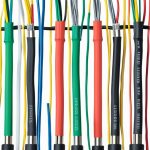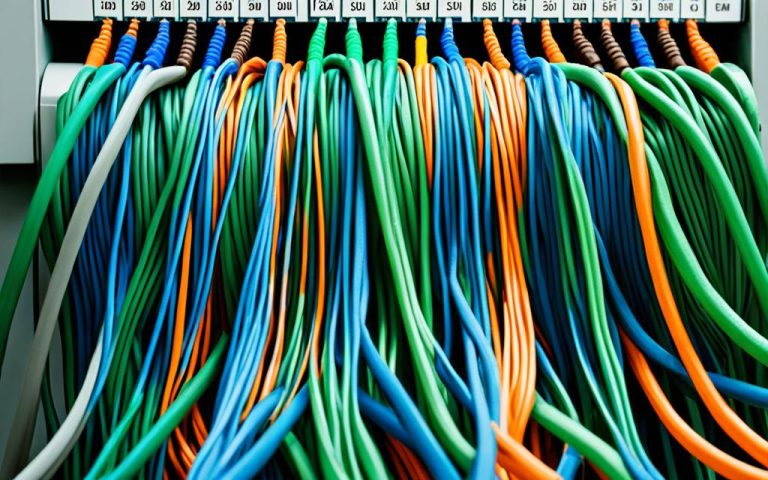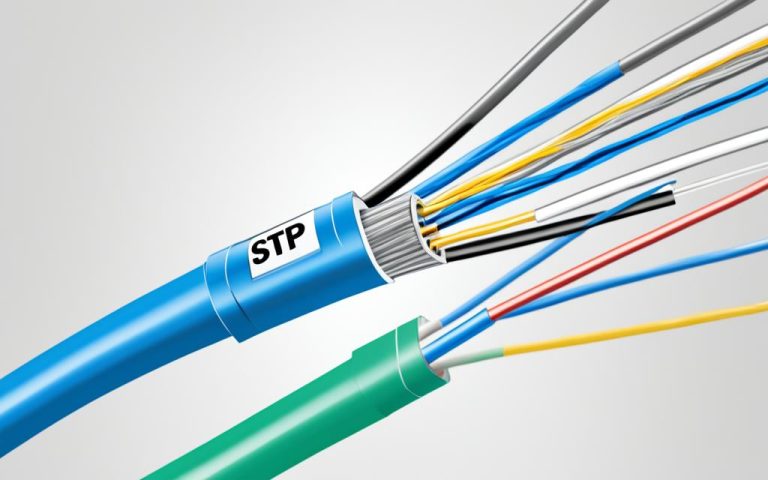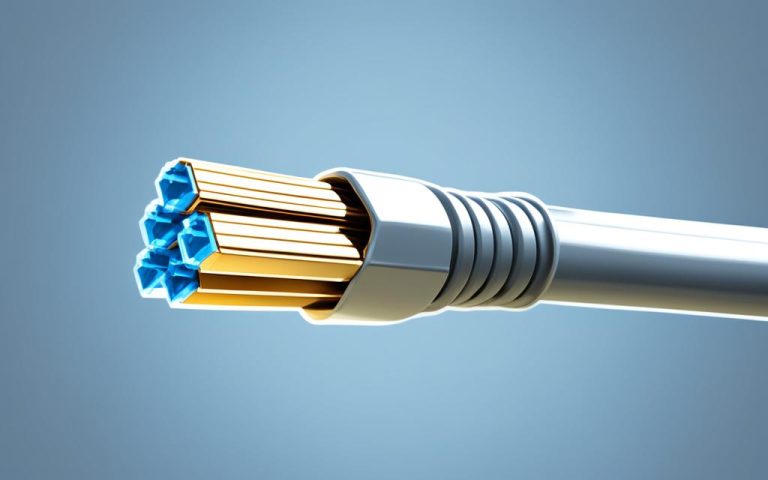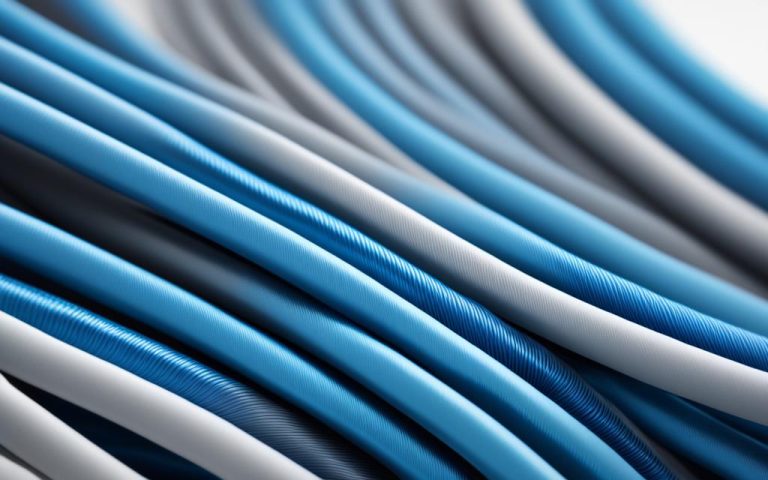Twisted pair and fiber optic patch cords play a crucial role in network infrastructures. To ensure optimal performance and reliability, it is essential to follow best practices in managing these patch cords. Proper planning, preparation, patching, and validation are key steps to minimize costs and ensure high-quality installations.
When it comes to planning bulk twisted pair cable installations, efficient change request processes are essential. Capturing all necessary information, such as staff names, authorization, and unique identifiers, ensures streamlined operations. Proper routing, patch cord lengths, and density should also be considered for optimal performance.
Best Practices for Planning Bulk Twisted Pair Cable Installations
When planning bulk twisted pair cable installations, it is essential to have a streamlined and efficient change request process. By following best practices, you can ensure the success of your installation project. Here are some key considerations:
1. Capture all necessary information
Ensure that your change request process captures all essential details, including staff names, authorization, date, unique identifier, services involved, work required, and connection locations. This information will help in coordinating the installation process effectively.
2. Search records and verify circuit path
Before beginning the installation, perform a thorough search of existing records to ensure accurate information. Verify the circuit path and assess any potential issues that may impact the installation process.
3. Check design guidelines and specifications
Review the design guidelines and specifications for your cabling infrastructure. Ensure that the chosen patch cords match the required specifications and comply with industry standards. This step will help avoid compatibility issues and optimize performance.
4. Consider routing, patch cord lengths, and density
Proper routing is essential to avoid interference and ensure efficient cable management. Evaluate the route for the cables and consider factors such as cable lengths and density to optimize performance and minimize potential issues.
By following these best practices, you can enhance the planning process for bulk twisted pair cable installations, resulting in smoother and more effective installations.
Preparation for Bulk Twisted Pair Cable Installations
Efficient cable installations require thorough preparation to minimize downtime and ensure a smooth process. By following these cable preparation tips, you can avoid potential issues and ensure a successful installation.
Studying Administration Records
Before starting the installation, it is essential to study administration records. This will provide crucial information about the network infrastructure, including the location of ports that need to be connected or reconnected. By familiarizing yourself with the existing setup, you can plan the installation process more effectively.
Locating and Labeling Ports
Locating the ports that require connection or reconnection is another important step in cable preparation. By accurately identifying these ports, you can minimize time spent searching for them during the installation process. Additionally, ensure that you provide technicians with all the necessary information, including labeling details for easy identification.
Inspecting Patch Cords
Before installation, inspect all patch cords for physical damage and ensure they are of the right type, quality, and cleanliness. Damaged or substandard patch cords can lead to connectivity issues and compromise network performance. By conducting a thorough inspection, you can replace any faulty patch cords and ensure a reliable installation.
By following these cable preparation tips, you can lay the foundation for a successful bulk twisted pair cable installation. The next section will cover the best practices for patching these cables, ensuring optimal performance and reliability.
Patching Bulk Twisted Pair Cables
When it comes to patching bulk twisted pair cables, proper handling is crucial to ensure optimal performance and avoid any potential issues. By following best practices, you can maintain the integrity of the cables and minimize the risk of performance degradation.
Maintaining the minimum bend radius: It is important to adhere to the minimum bend radius specified by industry standards when patching cables. Exceeding the bend radius can cause signal loss and signal reflection, resulting in poor network performance.
Avoiding excessive force: Applying excessive force during the patching process can damage the cables or connectors, leading to signal loss or intermittent connectivity. Ensure gentle and controlled handling when inserting or removing patch cords.
Bundling and routing for crosstalk prevention: Proper bundling and routing of patch cords help minimize crosstalk, which is the unwanted electromagnetic interference between adjacent cables. Keep cables separated and organized to reduce the risk of signal interference and maintain signal integrity.
Mindful untwisting: Twisted pair cables are designed with a specific twist rate to minimize electromagnetic interference. Untwisting the cables too much can disrupt their ability to cancel out interference and affect data transmission characteristics. Handle the patch cords while preserving their twisted configuration.
By following these best practices for patching bulk twisted pair cables, you can ensure the optimal performance and reliability of your network infrastructure.
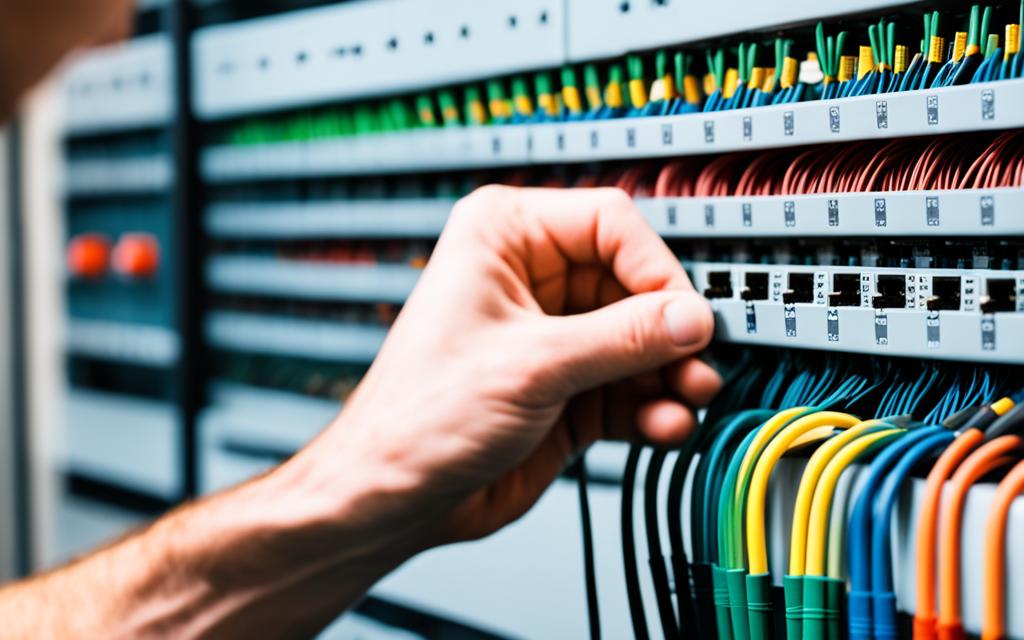
“Proper handling and adherence to best practices during the patching process are vital to ensure the optimal performance and reliability of bulk twisted pair cables.” – [Expert Name], Network Engineer
Cable Installation Mistakes to Avoid
When installing bulk twisted pair cables, it is essential to be aware of common mistakes that can compromise the performance and reliability of your network. By avoiding these pitfalls, you can ensure a smooth and efficient cable installation process. Let’s take a closer look at some of the most common mistakes and how to avoid them:
- Poor cable management: Proper cable management is crucial for easy maintenance and future scalability. Avoiding tangled or disorganized cables can prevent unnecessary downtime and troubleshooting. Implement cable management solutions such as cable trays, racks, and labels to keep your installation clean and organized.
- Running cables parallel to electrical cables: Electrical cables can generate electromagnetic interference (EMI) that can negatively affect the performance of network cables. To avoid interference issues, ensure a safe distance between networking and electrical cables.
- Using separate cables for data and voice: In many cases, it’s more cost-effective to use a single twisted pair networking cable for both data and voice communications. This reduces complexity and minimizes cable clutter.
- Limited space for cable removal: It’s essential to plan for future upgrades and maintenance by allowing sufficient space for cable removal. This prevents the need for extensive rework and minimizes disruptions to the network.
- Not completing proper testing: Thorough testing is crucial to ensure the cables are properly installed and functioning effectively. Use cable testers and certification tools to validate the integrity of the connections and identify any potential issues.
By being mindful of these common mistakes, you can achieve a well-organized and efficient cable installation that maximizes network performance and minimizes potential issues.
Expert Tip:
“Before installing bulk twisted pair cables, conduct a site survey to assess the environmental conditions, identify potential sources of interference, and plan the optimal cable routes. This proactive approach can help prevent many installation mistakes and ensure a successful installation.”
For a visual representation of the common cable installation mistakes and how to avoid them, refer to the table below:
| Mistake | Impact | How to Avoid |
|---|---|---|
| Poor cable management | Difficult troubleshooting, increased downtime | Implement cable trays, racks, and labels |
| Running cables parallel to electrical cables | Interference, degraded network performance | Maintain a safe distance from electrical cables |
| Using separate cables for data and voice | Increased cost, unnecessary cable clutter | Utilize a single twisted pair networking cable |
| Limited space for cable removal | Difficult future upgrades, possible network disruptions | Allocate sufficient space for cable removal |
| Not completing proper testing | Potential performance issues, unreliable connections | Thoroughly test the installed cables |
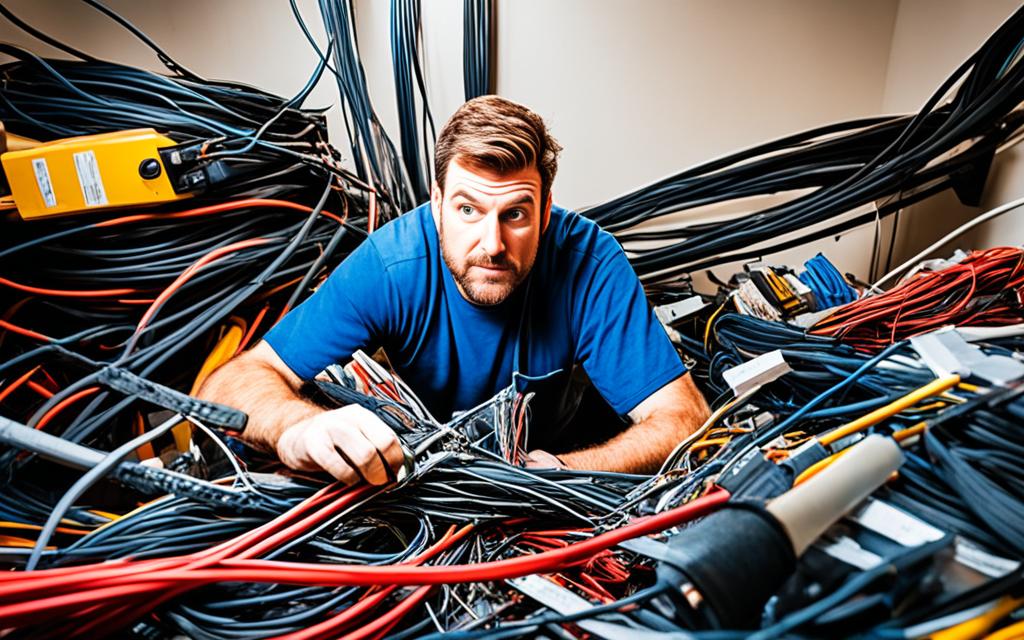
Conclusion
Efficient cable installations and best practices in cable management are essential to maintain high-quality and reliable network infrastructures. By following careful planning, thorough preparation, and proper patching, you can ensure optimum performance and minimize costs.
Proper cable management plays a significant role in efficient installations. By keeping networking cables away from electrical cables, you can avoid interference and maintain optimal signal quality. Additionally, using a single networking cable for both data and voice can simplify infrastructure and reduce costs.
Allowing sufficient space for cable removal is crucial for future updates and maintenance. This ensures that making changes or removing cables can be done easily without causing disruptions or additional expenses. Furthermore, completing thorough testing before and after installations is vital to ensure that the cables are functioning effectively.
By implementing these best practices in cable management and avoiding common installation mistakes, such as poor cable management and inadequate testing, you can achieve efficient cable installations. This not only reduces downtime and costs but also optimizes network performance, providing a reliable and high-quality infrastructure for your organization.
FAQ
What are the best practices for planning bulk twisted pair cable installations?
The best practices for planning bulk twisted pair cable installations include having a streamlined change request process, searching and verifying circuit paths, checking design guidelines, and ensuring proper routing, patch cord lengths, and density. These practices help ensure optimum performance and reliability.
What should I do to prepare for bulk twisted pair cable installations?
To prepare for bulk twisted pair cable installations, you should study administration records, locate the ports that need to be connected or reconnected, inspect the patch cords for physical damage, and ensure they are of the right type, quality, and cleanliness. Adequate preparation ensures a smooth installation process and prevents potential issues.
What are the best practices for patching bulk twisted pair cables?
When patching bulk twisted pair cables, it is important to handle the cords with care by maintaining the minimum bend radius, avoiding excessive force, and ensuring proper bundling and routing. Untwisting the cables too much can affect data transmission characteristics, so it should be avoided. Following these best practices ensures optimal performance of patch cords.
What are some common mistakes to avoid when installing bulk twisted pair cables?
Some common mistakes to avoid when installing bulk twisted pair cables include poor cable management, running cables parallel to electrical cables, using separate cables for data and voice, limited space for cable removal, and not completing proper testing. Proper cable management, avoiding interference, using a single networking cable, allowing sufficient space for cable removal, and thorough testing contribute to efficient and effective cable installations.




